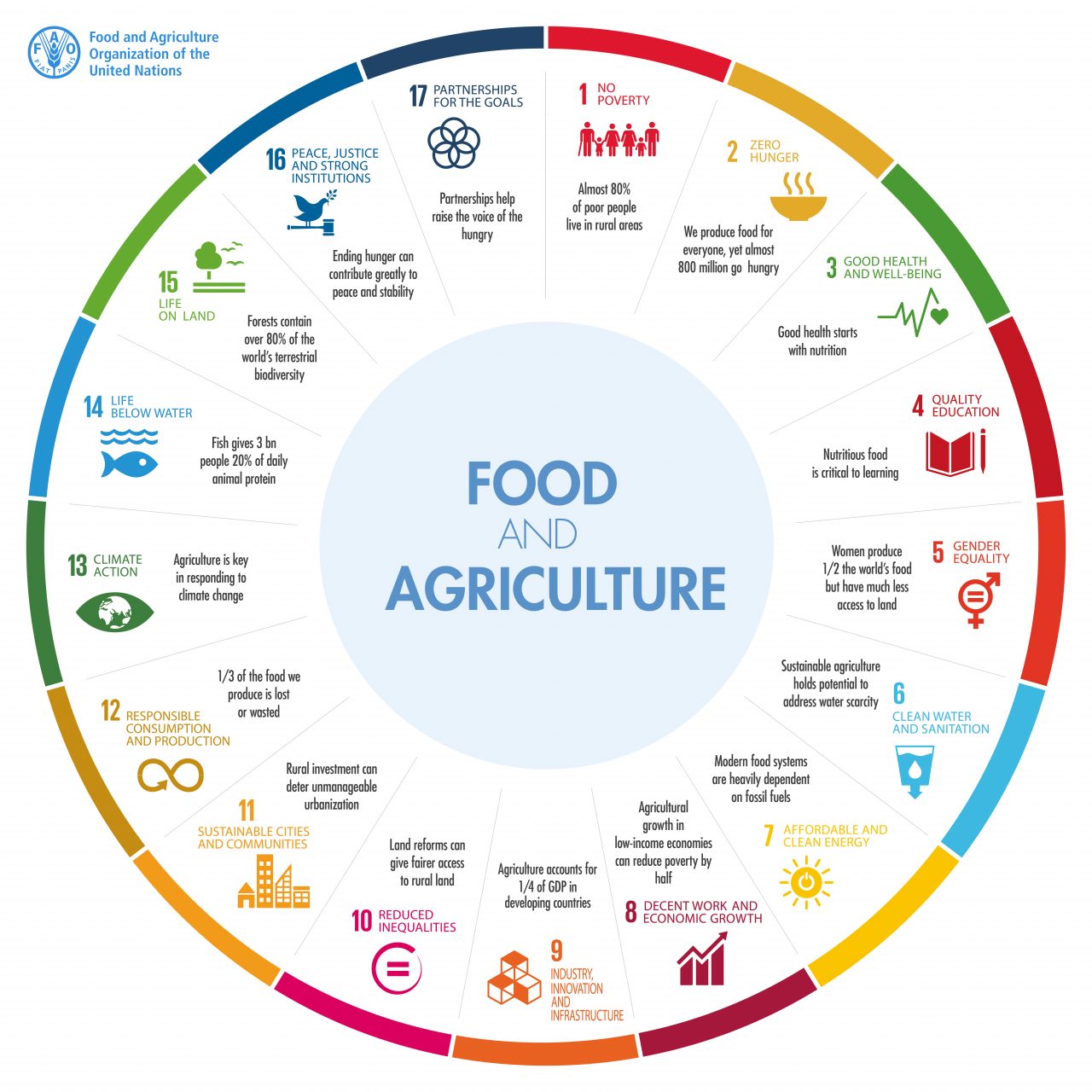The term “food system” refers to the constellation of activities involved in producing, processing, transporting and consuming food. Food systems touch every aspect of human existence. But too many of the world’s food systems are fragile, unexamined and vulnerable to collapse, as millions of people around the globe have experienced first-hand during the COVID-19 crisis.
Why Food System?
- The food system impacts all SDGs
- The true cost of malnutrition
A sustainable global food system benefits human health as well as the global ecosystem. However, this is far from the reality at present as almost 800 million people are undernourished, while at the same time around 1.9 billion people globally are overweight or obese.
-
- Malnutrition, in all its forms, includes undernutrition (wasting, stunting, underweight), inadequate vitamins or minerals, overweight, obesity, and resulting diet-related noncommunicable diseases.
- 1.9 billion adults are overweight or obese, while 462 million are underweight.
- Around 45% of deaths among children under 5 years of age are linked to undernutrition. These mostly occur in low- and middle-income countries. At the same time, in these same countries, rates of childhood overweight and obesity are rising.
The developmental, economic, social, and medical impacts of the global burden of malnutrition are serious and lasting, for individuals and their families, for communities and for countries.
- Environmental impacts of food and agriculture
Malnutrition is not the only reason why the global food system needs to change. It is impossible to separate our food production, processing and distribution from our environment. Unfortunately, the “conventional” way of producing food causes large-scale environmental degradation.
- Food accounts for over a quarter (26%) of global greenhouse gas emissions.
- Half of the world’s habitable (ice- and desert-free) land is used for agriculture.
- 70% of global freshwater withdrawals are used for agriculture;
- 78% of global ocean and freshwater eutrophication (the pollution of waterways with nutrient-rich pollutants) is caused by agriculture.
- 94% of mammal biomass (excluding humans) is livestock. This means livestock outweigh wild mammals by a factor of 15-to-1.4 Of the 28,000 species evaluated to be threatened with extinction on the IUCN Red List, agriculture and aquaculture is listed as a threat for 24,000 of them.
Food, therefore, lies at the heart of trying to tackle climate change, reducing water stress, pollution, restoring lands back to forests or grasslands, and protecting the world’s wildlife.
- Food loss and food waste
More than 30% of food produced is either lost or wasted. By way of example, around USD 408 billion of food produced in 2019 went unsold or uneaten. The FAO estimates the economic, environmental and social costs associated with food waste at USD 2.6 trillion. Eliminating food waste in the United States and Europe alone would add 10% to the world’s available food supply.
According to the Food and Agriculture Organisation of the United Nations (FAO), the global volume of food wastage is estimated at 1.6 billion tons of “primary product equivalents.” Total food wastage for the edible part of this amounts to 1.3 billion tons. This has an impact on the environment:
- Food waste’s carbon footprint is estimated at 3.3 billion tons of CO2 equivalent of GHG released into the atmosphere per year.
- The total volume of water used each year to produce food that is lost or wasted (250km3) is equivalent to the annual flow of Russia’s Volga River, or three times the volume of Lake Geneva.
- Similarly, 1.4 billion hectares of land (28% of the world’s agricultural area) is used annually to produce food that is lost or wasted.
What solutions are there?
- As a first step, priority should be given to balancing production with demand. This essentially translates to lesser use of natural resources to produce food which is not needed.
- More efforts should also go into developing better food harvesting, storing, processing and distributing processes. If oversupply happens, steps should be taken to redistribute the food or to divert it to people who are in need.
- Dietary habits represent another intervention area. Over the past 50 years, diets have become increasingly homogenous, dominated by crops that are rich in energy but poor in macronutrients. In fact, low dietary diversity has surpassed caloric insufficiency as the primary driver of death.
- A change toward a plant-based diet appears inevitable, if the global food system is to become more sustainable. Research suggests that a plant-based diet not only has around a 90% lower emission intensity than the current average diet, but also has the potential to reduce the number of premature deaths among adults by around 11 million.
Despite the involvement of more than 600 mainly small and private companies in the field of sustainable food R&D, production, etc, the traditional food companies should continue to transition their operations toward healthier products. The great challenge of our era is to succeed in protecting our planet by feeding humans in a way that is sustainable, equitable, and nourishing.
If you would like to discuss opportunities to find lasting solutions in the food systems and hear what Zebra Insights experts, business leaders, startup founders and social entrepreneurs have to say about building back better, please drop us an email at: info@zebrainsights.com or just fill out this quick form on our website.
Sources:
https://www.fao.org/home/en/
https://www.un.org/


